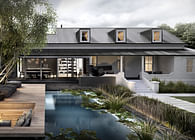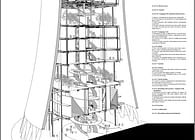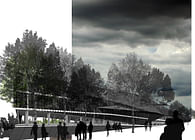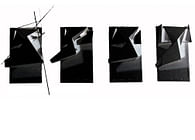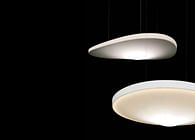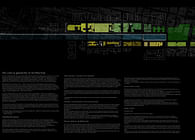
The park(let) project was initiated by Blok, a private-sector property development company, and informed by research and urban studies conducted and facilitated by Non-Profit Organization (NPO) Future Cape Town. After numerous dialogues between all stakeholders local South African architect Jaun van Wyk was appointed to design and deliver the parklet, due early December 2015.
A parklet is an urban intervention which occupies a car parking bay(s) or large sections of a sidewalk, usually temporary in nature, which acts as an extension of the public realm. They are designed to provide a public place for passers-by to relax and enjoy the atmosphere of the city around them; sidewalk extensions that provide more space and amenities for people using the street. They denote a valuable opportunity for change, where familiar streets become places to stay, rather than a space that must be moved through as quickly as possible. They take monotonous and utilitarian urban spaces and transform them into engaging and inviting places for the public.
As per the design brief the parklet occupies two car- parking bays in front of the Blok showroom on a busy stretch of Regent Road, Sea Point. The project identified two visual axis, one a lengthy perspective down Regent Road and the second an unheeded visual linkage between passers-by on either sideof the street. Typically parklets are designed as to incorporate one side of the street whilst the other is completely neglected, however the parklet attempts to achieve a well-defined experience of the parklet from either sides of the street. This was achieved by planning the parklet perpendicular to the side walk instead of the parallel norm.
The conceptual development of the parklet incorporated key conceptual features of both art and architecture, thus creating a seamless confluence between function and an apparent overlooked artistic nature. In doing so the parklet becomes both a functional extension of the existing urban infrastructure and a visual addition to the cityscape. From afar the parklet could be observed as a simple extrusion of art-deco forms, a direct response to the prevailing architectural expression in Sea Point. Each of these abstract forms where arranged within a 500x500mm modular grid. This grid and the subsequent extrusions shape and change according to need, whether it be seating, standing or a place to rest. The abstract nature of the parklet opens it up to interpretation and users are encouraged to use the freestanding structure as they see fit.
The structure is conceived of recycled plastic sheets which creates a rare opportunity for local residents/ community members to assist with the removal of waste from the conventional waste streams (which might end up in a landfill site). Thereafter this waste would be cleaned, granulated and prossessed to form a new product. Made from 100% recycled materials, these UHMWPE/HDPE sheets are sustainable and long-lasting building materials with exceptional UV, water and weather resistance, hard, dense, rigid, can be fixed using adhesive and graffiti proof. Furthermore the manufacturing process uses between 50% and 70% of the energy that would be used to create sheets from virgin material and gives off no harmful fumes whilst being processed.
Lastly the parklet hosts a variety of indigenous flora own to the Sea Point area. The identified species are extremely suitable for public use in terms of growth, maintenance and safety. Simultaneously these species have been identified as they are extremely fragrant in nature and will assist in subduing smog from cars in addition to blocking out noise generated by passing traffic. Trees have also been allocated on either sides of the structure as to provide natural shade over the parklet.
Status: Under Construction
Location: Cape Town, ZA
My Role: Architect
Additional Credits: Structural Engineer: K.F.D. Wilkinson Consulting Engineers
Contributors: Blok Property Developments, Future Cape Town, Cape Town Spatial Development Framework (CTSDF), Transport for Cape Town (TCT), Sea Point City Improvement District (CID)
